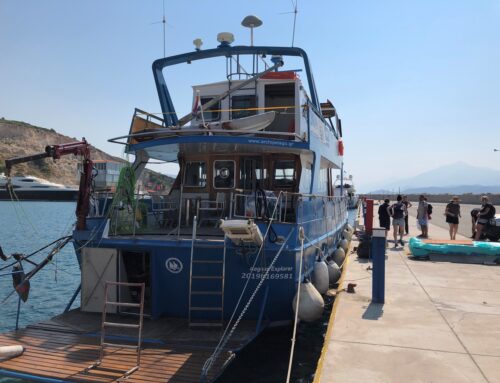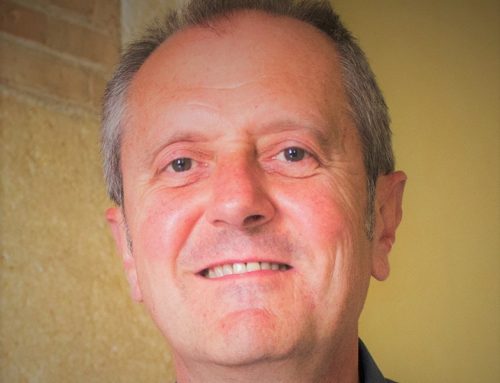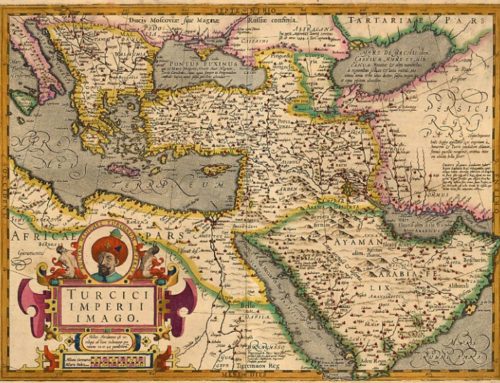Stefan Hanß: COVID-19 changes people’s lives, fears, hopes, and behaviours across the globe right now. In his recent Cambridge University Press monograph The Matter of History: How Things Create the Past, Professor Timothy James LeCain (Montana State University) writes about the “fellow travelers” that “make us human”: “an average human body has about three times more bacterial cells than human ones.” You call this an ever-evolving relationship “that can be both wonderfully creative and horrifically destructive.” How do you experience the coronavirus pandemic these days?
Timothy James LeCain: Honestly, I’ve been feeling rather useless these days. While skilled doctors, nurses, and other medical professionals are leading the fight against a pandemic, a historian like myself doesn’t seem to have much to offer. Still, if there’s one thing history is good for, it’s spotting bigger patterns in the chaos—and maybe even extracting some useful silver lining lessons from dark clouds. As an environmental historian, it seems to me that the current COVID-19 crises should be recognized as just the latest and loudest of three major warning alarms that first began going off in the 1950s. The first two warnings brought some modest tinkering around the margins, but failed to challenge the deeper problems facing the modern world. Will COVID-19 be more transformative?
SH: What would you consider the first warning?
TJLC: The first big warning came with DDT and other synthetic chemicals. The post-World War II era marked the beginning of an unprecedented experiment in human society that bred the illusion that we were becoming less interconnected with the material environment around them. In reality, no civilization in history had ever been so dependent on such an exotic global array of material things, from Jamaican aluminum to Moroccan phosphates to Australian zirconium. Sometimes termed the “Great Acceleration,” this experiment had deep roots in the industrialization of the late 18th century. For the first 150 years or so, the experiment was confined to a relatively small portion of the globe. But after World War II it began to expand. In just a handful of decades, billions of people abandoned age-old ways of life. Almost over night they came to depend instead upon oil, plastics, and synthetic chemicals for everything from food to furniture to clothes to the temperature of their homes and how they traveled. Industrial agricultural eliminated jobs in the countryside and millions moved to densely populated cities and suburbs. The use of cars, air conditioners, televisions, and other modern energy- and material-hungry technologies soared. In the blink of a historical eye, the every day lives of billions came to look almost nothing like those of even their parents, much less the hundreds of generations who had came before them. official zlibrary domain z lib . Find free books
This Great Acceleration experiment in modern living was in many ways a stunning success. Cheap energy, agricultural chemicals, plastics, and other modern miracles sharply reduced poverty and improved the health, education, and lives of millions. Ironically, precisely because it was so unprecedented in the scale and scope of its material connections. We hadn’t transcended the natural world, as promised. Rather, we were becoming ever more entangled in its complex and often unpredictable webs. Yet so long as the Great Acceleration raced along as expected, few thought to ask if the blessings of modernity might have been achieved in simpler, less resource intensive, and perhaps more resilient ways.
SH: The rhetoric of a society’s liberation from its material environment has been grounded in and further intensified a deep faith in technology. Such beliefs also had a profound impact on how people understood history itself. C. P. Snow even argued that the humanities and the sciences had become separated in “two cultures”. Six decades later, this line of thought has been proven to be an intellectual chimera. New academic cultures make such fictional disciplinary separations obsolete. Material culture historians and archaeologists work in laboratories and invest in establishing close collaborations with disciplines in the humanities and the sciences. Philosophers, anthropologists, historians and art historians have discussed the agency of the material world, and their impact in shaping societies. Inspired by neo-materialist thought, you call for “a new type of history and humanism” that accounts for the dynamic interrelationship between societies, cultures, and the agentive non-human world of matter (fig. 1). What did that interrelationship look like during the first warning?
TJLC: Precisely because of the sort of “two-cultures” thinking you identify, when the first warning alarm began to ring out in the 1950s it came as a big shock. We were surprised to discover that our bold experiments with radioactive nuclear testing and mass spraying of DDT could put these carcinogenic poisons into our thyroids, food, and mothers’ milk. Rachel Carson and other scientists schooled the world on the ecological reality that food chains can bio-concentrate dispersed toxins back to deadly levels. The alarm grew a bit louder when we realized that some of the tens of thousands of wholly novel chemicals synthesized since 1945 were causing similar problems. It turned out that supposed “medicines” like diethylstilbestrol (DES) or useful new plastic additives like bisphenol-A (BPA) disturbed the delicate hormonal balances in our bodies in unpredictable and often harmful ways.
Slowly, it dawned on us that we were all unwitting guinea pigs in a largely unintended and unplanned global experiment in “modern living.” Governments, companies, and individuals scrambled to respond to this first warning, with some real successes. Yet others pioneered the dangerous new strategies of manufactured doubt, deceit, and bald-faced denial. By and large, we made just enough changes to keep the experiment racing on as before.
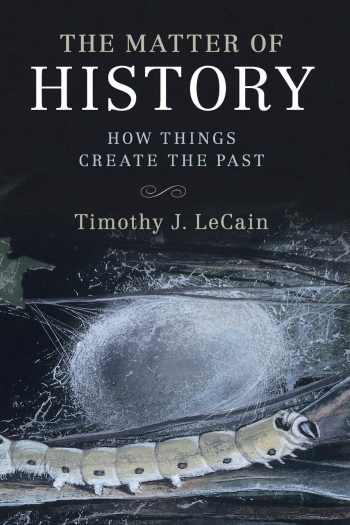
Fig. 1: Timothy LeCain’s The Matter of History (Cambridge, 2017) is doubtlessly one of the theoretically most stimulating books written in History in the last decade. Image credit: https://www.cambridge.org/core/books/matter-of-history/8555302A1B4D09DBCB94844BE04F524B.
SH: The second warning, I presume, has been the discovery of global warming?
TJLC: Right! That second warning alarm went off a few decades later. Thanks to James Hansen and other climate scientists, we discovered that billions of humans burning billions of tons of coal and oil were heating the planet. It gradually became clear that every single human civilization of the previous 12,000 years depended on a narrow range of stable climactic conditions called the Holocene Epoch. We assumed it would last forever. But now, in just a handful of decades, the pollution from all those cars, planes, and power planets was throwing that delicate balance out of whack. Once again, some governments and corporations took modest actions to reduce carbon emissions. The supposed “leaders” of others, as in the United States, preferred to wallow in obfuscation and illusion. Regardless, it’s now been more than two decades since the second warning and we haven’t even come close to achieving the big structural changes necessary to avert climate disaster. As before, business continues largely as usual.
SH: This boils down to the question of societal change, thus, historical and present societies’ willingness to adapt to a changing material world and its ever-changing material record. How do you understand the role of microscopic records in shaping societies in regard to the warnings discussed above?
TJLC: Partly because the first two warnings didn’t spark any fundamental changes, now we’re in the midst of the third, and this time the alarm has become a deafening klaxon call. Given the sheer magnitude of the COVID-19 pandemic, world governments will almost certainly take steps to better prepare for and reduce the likelihood of future pandemics. With some luck, they’ll succeed. But now the important question is obvious: Even with three warning now, will we once again change things just enough to keep the larger experiment churning along? Given our poor historical track record thus far, pessimism might seem warranted. But this time I think there are good reasons to hope that the COVID-19 warning will bring at least some of the desperately needed course corrections that DDT and Global Warming could not.
SH: You are very optimistic! In a recent interview, sociologist Jürgen Habermas cautioned against “rash prognoses”. He emphasized that all our actions and thoughts are characterized by uncertainties in times of COVID-19.¹ As a historian, how do you think about the current situation’s uncertainties?
TJLC: Habermas is right. I’d argue that once the over-confident epistemologies of the Great Acceleration are revealed, uncertainty reigns. The old modernist separation of cultural and material disciplines leaves us incapable of accurately analyzing and responding to phenomena like COVID-19 that transcends them. On the humanist side, we became convinced that ideas and culture were the real historical drives. But a neo-materialist approach argues these are always at least in part created and sustained by material changes. The cultural and material are inseparable. I think history suggests that people and societies rarely make major course corrections solely because of new insights or ideas. How many of us spoil every holiday dinner rehashing the same old arguments fully knowing that once again no one will change their mind? True, analysis and argument can bring changes at the margins. But major historical shifts usually happen only when a sizable number of people personally experience some new material reality. Sadly, the most powerful lessons are often the harshest. The mass unemployment and impoverishment of the Great Depression birthed the American liberal welfare state. The mass death and destruction of World War II helped to create the European Union. Humans are stubborn creatures, but they can be taught.
In this light, it becomes clear that the effects of DDT and Global Warming have (at least to this point) been too random, abstract, or distant to generate any deeper reconsideration of the Great Acceleration experiment. Was your thyroid cancer caused by radioactive pollution, carcinogenic chemicals, or just bad luck? Frequently there’s no way to say with any certainty. Likewise, DES, BPA, and other endocrine disruptors can be harmless at times, but devastating if exposure occurs at a critical moment in fetal development. Global warming contributed to the recent spate of massive wildfires in Australia, Sweden, Spain, Brazil, Indonesia, and California, yet experts admit that it is difficult to estimate how much (fig.2). The meltdown of ice sheets and glaciers in the polar zones is equally unprecedented (fig. 3). But even catastrophes of this magnitude may seem like distant abstractions to the billions who now live in concrete high rises where the only forest or glacier they will ever see is a picture on a calendar. To be sure, a shared climate disaster looms 50 or 100 years down the road, perhaps even sooner. But the temptation to hope that some techno-miracle will save us before then is great. Throw in our growing appetite for living in the immaterial world of the Internet where disinformation and distraction thrive, and it becomes all too easy to confuse reality and fantasy. This is where COIVD-19 is different, as its material effects are all too clear, intimate, and universal. As one woman here in Montana who barely survived the virus put it: “It’s different when you’re living it—when it’s real and happening to you.”² While the poor and working class are disproportionately harmed, COVID-19 is still striking across conventional bounds of class, ethnicity, and nation. Even if we don’t personally become seriously ill, many of us will know someone who did—and someone who died. David Geffen and other billionaires hope to ride out the pandemic on their super yachts, but sooner or later even the richest have to come back to shore. When the British Prime Minister ends up in the hospital ICU, it’s obvious that this time nearly everyone will experience the kind of harsh material realities that generate deep personal and societal change.

Fig. 2: Our world is on fire. This image by Joshua Stevens, using MODIS data from NASA EOSDIS/LANCE and GIBS/Worldview, documents Amazon fire activities between 15 and 22 August 2019. Image credit: Joshua Stevens in “Uptick in Amazon Fire Activity in 2019,” NASA earth observatory (26 August 2019), https://earthobservatory.nasa.gov/images/145498/uptick-in-amazon-fire-activity-in-2019.
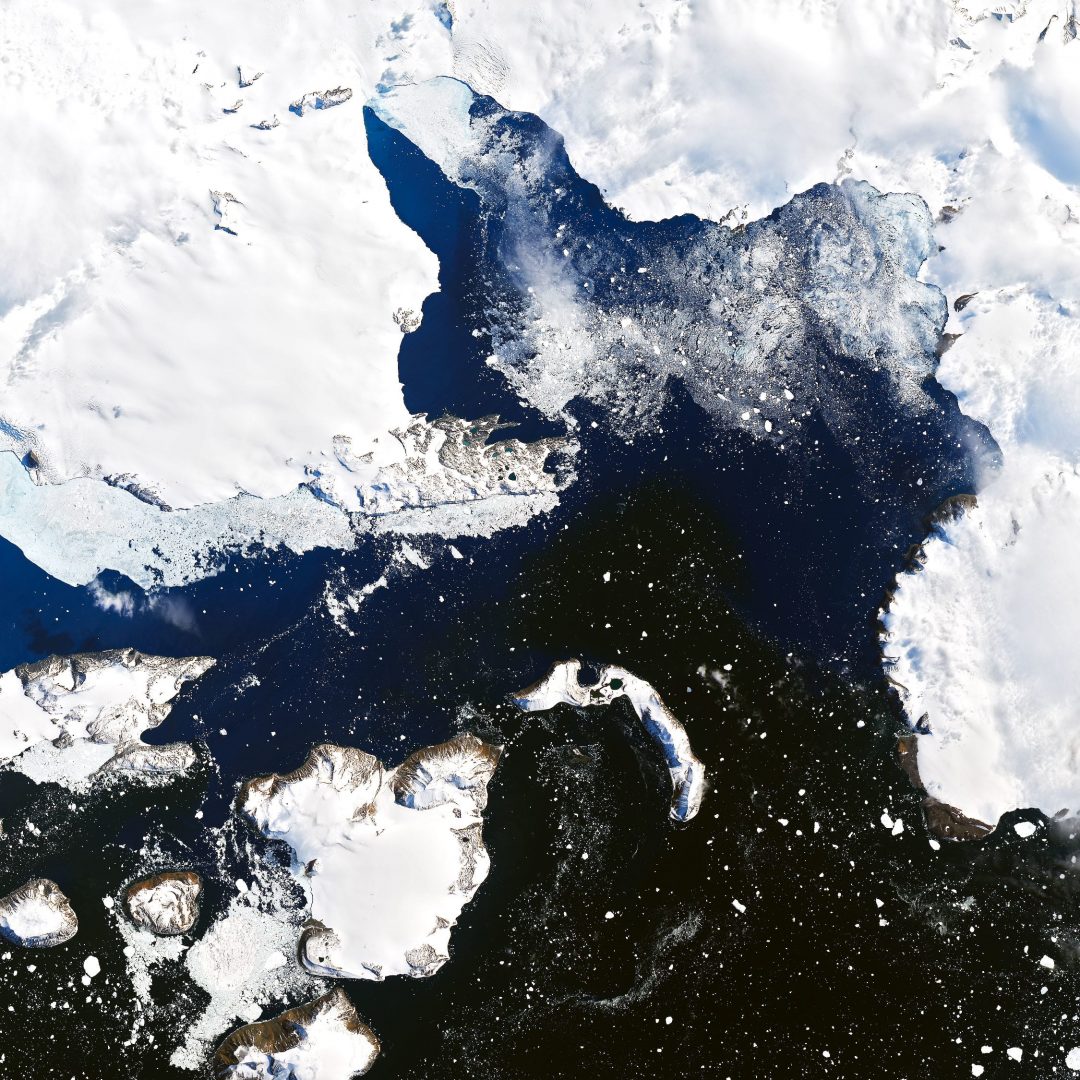
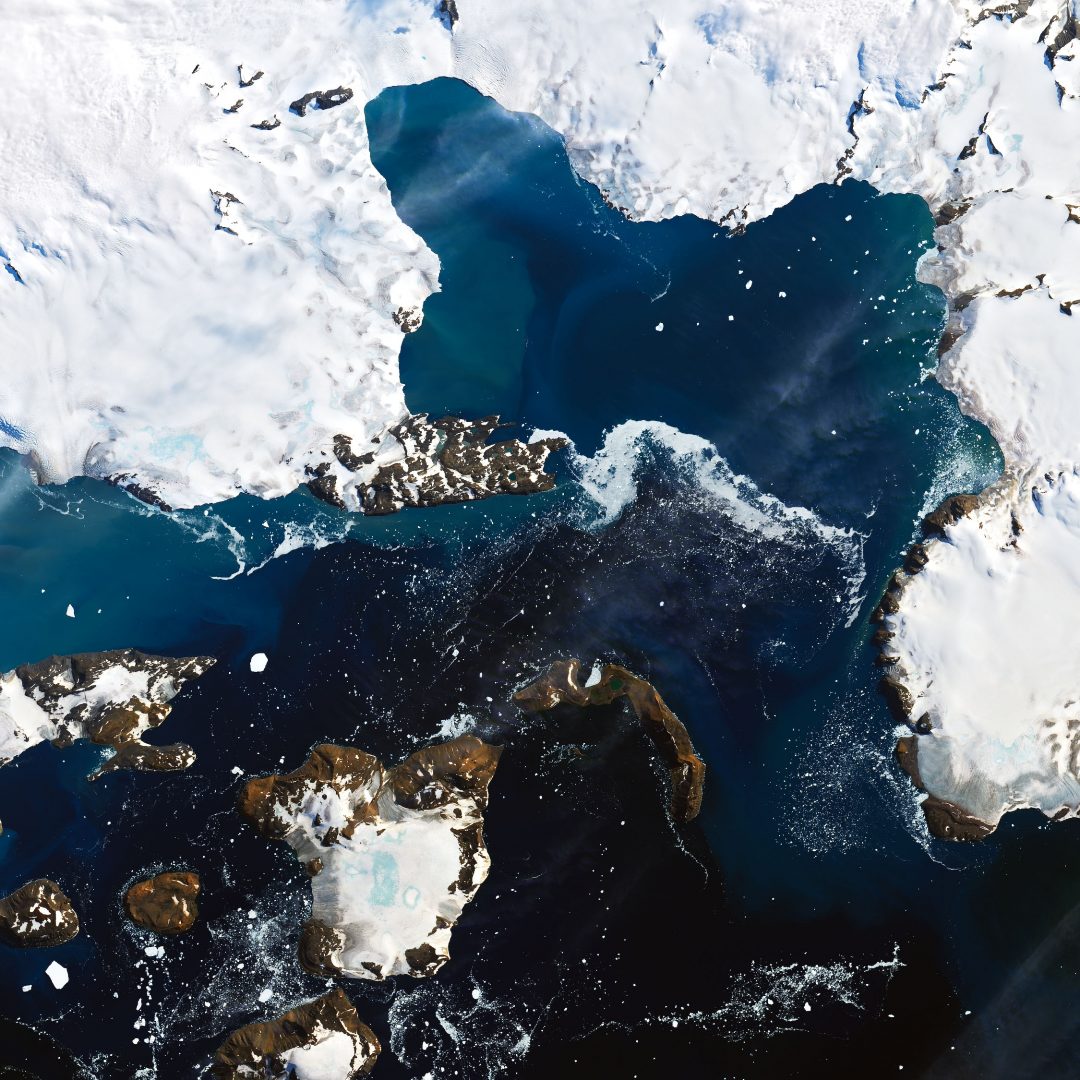
Fig. 3: Transformations in the Antarctica between 4 February 2020 (upper image) and 13 February 2020 (lower image). These images by Joshua Stevens, using Landsat data from the U.S. Geological Survey and GEOS-5 data from the Global Modeling and Assimilation Office at NASA GSFC, document the impact of the hottest temperature record for Antarctica. Image credit: Joshua Stevens in Kasha Patel, “Antarctica Melts Under Its Hottest Days in Record,” NASA earth observatory (21 February 2020), https://earthobservatory.nasa.gov/images/146322/antarctica-melts-under-its-hottest-days-on-record.
SH: COVID-19 forces us to face the microscopic record of the material world, and to reconsider our own approach to it. Does the current coronavirus pandemic affect your methodological thinking?
TJLC: Because COVID-19 tightly links our personal bodily health to the ecological health of the planet, I think it pushes us towards a methodology that unites brains and bodies with the material environment in which they exist. The Great Acceleration had gambled on an audacious experiment which assumed the opposite: that we could change our environment without changing ourselves. But what actually happens if we destroy vast swaths of the planet’s wild ecosystems at the same time that billions leave the countryside to live in densely populated cities? Scientists have warned for decades that, once deprived of their natural reservoir of wild animal hosts, growing numbers of deadly zoonotic virus like SARS (2002-2004) and MERS (2012) would “spillover” into that untapped urban reservoir of humans with no natural resistance. Throw in another Great Acceleration innovation—cheap hydrocarbon-fueled international air travel—and your experiment now has an unprecedented way of spreading a regional outbreak to the globe at astonishing speed. As millions lose jobs and savings that may never return, COVID-19 is also showing us that a sick planet makes for sick economies. Just as modern civilization depends on a stable climate, so too does the world economy depend on a stable ecology of disease. As global capitalism generates ever more frequent spillovers of zoonotic diseases, it will increasingly undermine the human and material connectivity that it needs to survive. It becomes clear that humans don’t just live in an environment but that we are that environment.
In contrast to the large-scale ecological and planetary warnings created by DDT and greenhouse gases, COVID-19 take us in the opposite direction, down to the microscopic world of viruses and bacteria that live all around us, on us, and even inside us. Scientists believe the COVID-19 virus probably jumped from horseshoe bats to people (perhaps through a pangolin intermediary) at a wildlife market in Wuhan, China. These “wet markets” offer a convenient pathway for a novel virus to find its way to a human host, and the Chinese may now eliminate many of them. But don’t think this will solve the problem. There are countless ways that a zoonotic virus can find its way to humans, including the giant factory farms (another dubious Great Acceleration invention) around the world that raise most of the chickens, pigs, and other animals we eat. Remember the avian and swine flu outbreaks?
But whether the spillover occurred in a Wuhan wet market or an Arkansas chicken factory, the really important thing to think about is this: The odds that any virus would just happen to mutate into a form that could not only infect humans, but also prove so deadly to them, were infinitesimally small. Yet the virus did mutate and it did spill over into humans, as did SARS and MERS before it. How is this possible? Some conspiracy theorists are already claiming, without evidence, that the Chinese must have deliberately engineered such a perfect pathogen as COVID-19. But as with previous conspiracies about DDT and global warming, this is just another way of avoiding the deeper lesson COVID-19 is offering us about the astounding creativity of the material world.
SH: A study of microscopic records teaches us a lesson about the creativity of material cultures, and the large-scale implications of such small-scale changing realities. Does COVID-19 also make us imagine different human-thing relationships in our own society in the future?
At the microscopic level, where hijacked cells are replicating billions of viruses every second, the improbable becomes probable, and even inevitable. The possible permutations in the amino acids that are the building blocks of all life are not just astronomical, but hyper-astronomical—greater than all of the hydrogen atoms in the entire universe. Because they reproduce so quickly, viruses like COVID-19 can sort through this vast library of possible permutations at what one scientist calls “warp speed.” Here we begin to glimpse a level of small-scale biochemical creativity that is light-years beyond anything humans can imagine. Indeed, the COVID-19 virus even appears to have found a sort of evolutionary “sweet spot.” It evolved quickly enough to jump to humans, but now it seems to be staying genetically stable so it can exploit its new host most efficiently. Whether it will resume a more rapid rate of mutation when threatened with an effective vaccine remains to be seen.
Regardless, it seems clear that plodding humans are unlikely to stay ahead of such genetically nimble and creative microbial world for long. At this late date we have no other choice but to hope that the best and the brightest minds on the planet can quickly develop an effective vaccine or treatment for its latest creation. But keep in mind that we’ve seen this pattern with before. If we’d responded to the threat of global warming two decades ago, relatively simple measures like cutting back on personal automobiles and investing in solar and wind might have done the trick. But because we were unwilling to abandon the Great Acceleration experiment, we may now have little choice but to gamble on massive geoengineering projects that would have seemed insane just a few years ago. Again and again we back ourselves into a corner where the only way to fix the problems created by science and technology is to use even more science and technology.
But instead of once again doubling down our bets on business as usual, maybe this time will be different. Might it be that the tiniest biological agent on the planet—a virus—will teach us the biggest lesson of all? The reckless experimentation of the Great Acceleration depended heavily on one basic belief: That humans could safely manipulate the natural material world around us, because it was by and large stable, static, and predictable. Pull the right levers, turn the right crank, and the machinery of nature would do as we wish. But now COVID-19 is telling us in no uncertain terms that this belief can scarcely be more wrong. The material world is alive and creative, not some simple machine, and it can be both helpful and harmful. In this sense, humans don’t control nature so much as we surf along a powerful wave of constant material change. If we respect the wave, it can carry us far. But if we are dismissive and carless, it can easily crash down on top of us. Like the family matriarch from a cheesy 70s sitcom, Mother Nature brought us into this world—she can surely take us out.
Humans will survive the COVID-19 crisis. But the third warning is ringing louder and clearer than any before it. When the worst is behind us, will we seize the chance to change course or, as with DDT and global warming, just return to business as usual? I am cautiously optimistic that, for all the reasons noted here, this time is different. The smallest of biological actors can reveal a material creativity that can be harder to spot at bigger human and global scales. I also take heart in knowing there are already countless simpler, safer, and fairer solutions to our problems. We can drive less, walk and bike more; buy less stuff, repair what we have; use solar, quit oil. We all know the drill. To do so, will mean giving up our childish dreams of infinite human growth, power, and transcendence. But in exchange perhaps we can rediscover the deeper and more enduring joys that an awesomely powerful planet of things, both great and small, can grant to us.
The upcoming British Academy Rising Star Event ‘Microscopic Records: The New Interdisciplinarity of Early Modern Studies, c.1400–1800’ will further discuss how the study of microscopic records may alter our understanding of history, and the early modern past in particular.
¹ Markus Schwering, “Jürgen Habermas über Corona: ‘So viel Wissen über unser Nichtwissen gab es noch nie’,” Frankfurter Rundschau, https://www.fr.de/kultur/gesellschaft/juergen-habermas-coronavirus-krise-covid19-interview-13642491.html, 10 April 2020 (access 11 April 2020).
² “When It’s Real: Bozeman Corona Virus Survivor Recalls her Ordeal,” Bozeman Daily Chronicle (2 April 2020).
Cover Image: A transmission electron microscope image of COVID-19 (SARS-CoV-2). Image credit: NIAID-RML and Wikimedia commons, https://en.wikipedia.org/wiki/File:Novel_Coronavirus_SARS-CoV-2.jpg.
Timothy James LeCain, Montana State University
Stefan Hanß, The University of Manchester
This interview first appeared on the following website, where you can find more detail on related research: https://sites.manchester.ac.uk/microscopic-records/2020/04/24/writing-history-in-the-time-of-covid-19-historian-timothy-lecain-on-the-third-warning-microscopic-records-and-societal-change/



